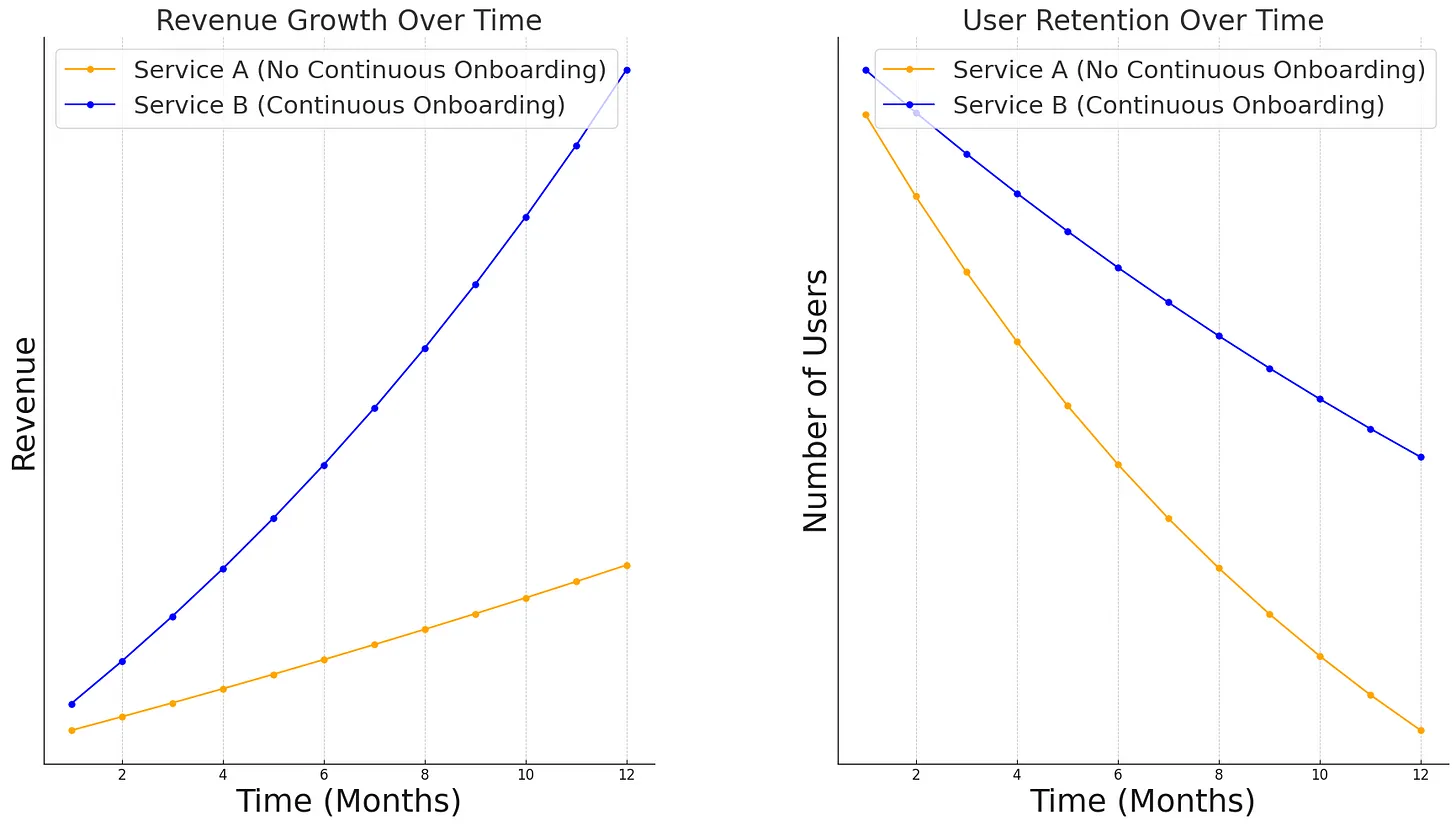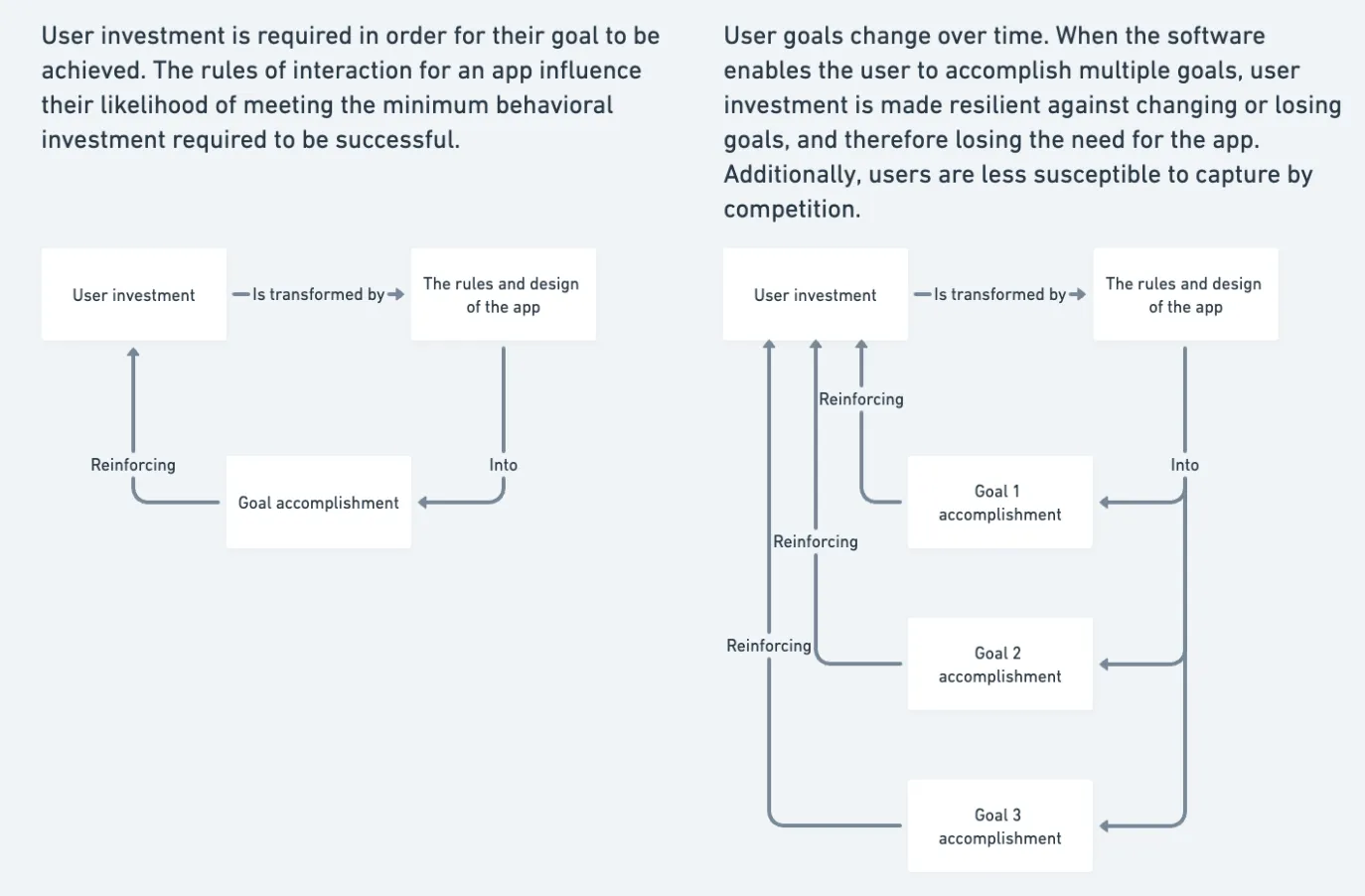Horizontal productsHorizontal product
Definition: Horizontal products can be used by all sorts of people for many different purposes. A vertical product, by comparison, is meant for a specific set of use cases. Most horizontal products are just fancy data structures.
For more details, see Joel Spolsky, the founder of Trello discussing horizontal products.
Another concept that I want to point to here is just the idea of horizontal products having a low floor, wide walls, and a high ceiling. The basic idea is that it should be ea... like Notion, Airtable, Excel, and Obsidian are all powerful/flexible and require learning and expansion of use cases over time to wrap your head around them. Given that, why do they only teach people how to use the app for the first few minutes?
It's not just horizontal products though. Continuous Onboarding applies to most apps that aren't just "open, press a button, and close." Are you continuing to add features over time that would benefit users that are more than a month into their journey? How are users going to find those features and mentally connect them to greater goal accomplishment? Other examples include Substack, calendars, email clients, PDF readers, etc.
User goals change over timeUser goals change over time
A user’s goals 1 week into using your app and 6 months are rarely the same. “Elder users” often won’t even retain the goals that they had at the start of their experience. Apps with continued user involvement enable the user to accomplish multiple goals to maintain users through full goal transitions.
New users do not yet have the vocabulary to understand the app. User skill level increases over time, giving the user new vocabulary to conceptualization and express desires that they didn’t ha.... The goals they have six days in are going to be different than the goals they have 6 months in, so it needs to be the case that user skill level increases over timeUser skill level increases over time
Imagine that you have just started to use Excel or Photoshop. Both of those apps have an insane amount of functionality, and it would be unreasonable to expect the user to understand what is possible and how to do it immediately. Over time, with continued User Involvement, they will simply grow more comfortable with the app.
The most successful app adoptions come from a project, because they give the user a reason to increase their skills. As they work on their projects, they'll bump up agai... in order to match their changing goals. Apps that are responsive to changing user goals over time foster continued user buy-in, so it makes sense that the app should continuously teach people how to use its app better.
Continuous Onboarding never stops. As users accomplish more of their goals, their self-efficacy
goes up. They feel as though the effort they've invested was worthwhile. Through learnable design, their mental modelsmental model
align with how the app's, and things "just make sense." Both adoption and retention go up, allowing you to escape the Sisyphean cycle of acquisition and churn.

It should be noted that some apps have a more expansive range of potential use cases than others. It may be the case that the user can learn your app in 10 minutes and then be done learning. The important thing to continuous onboarding is to think about Goal ResonanceGoal Resonance
When an app is goal resonant, it takes the users actions (the inputs) and amplifies/transforms them into goal achievement (the outputs). Apps that are goal resonant enable the user to bridge the Intention-Behavior Gap. It is important to Speak to the user with a shared vocabulary so they know that the app is goal resonant.
Persuading people to do behaviors that are out of alignment with their goals and values is an uphill battle. Since Products are fundamentally voluntary, the only way you'r...- how will a user discover that the app helps them accomplish a goal and execute the sets of behaviors that enable them to accomplish said goal? The user may have a lack of imagination as to what user goals they can accomplishThe user may have a lack of imagination as to what user goals they can accomplish
The user believes that the app will help them achieve a goal that they actually have, but New users do not yet have the vocabulary to understand the app. This means they'll often be painfully unaware of all of the goals that they are able to accomplish.
The app must communicate clearly to the user how the app relates to goals that the user already has. This is part of why I recommend products Use a badging system as a method of actionable user research, even if a badging system isn't ultimat..., so how can we expand their conceptualization of the product's utility?

"Explainer content" (documentation, app tours, videos, etc.) is valuable, but isn’t scalable. Most people ignore explainer content. Learnable design, on the other hand, means that, as the user attempts to do something, the app communicates how it works through feedback loopsFeedback loops are a more efficient method of communication
I'm trying to train my dog not to jump on the bed while I sleep. Up until recently, we've had him sleep in the crate at night, but ideally we'd be able to give Bennie a bit more freedom. He's allowed to hang out with us on the bed during the day, so it's surely confusing that he can't at night. He also doesn't understand English, so we can't just explain to him the rules!
To teach him the rules, we have to leave the crate door open at night, wait for him to jump on the bed, and then kick him.... Make the impact of the user's actions more clear and immediate, while signaling how it brings the user closer to or further from their goals. Pay attention to the user's choices, and based on those, connect users to the functionality that matches their intention.